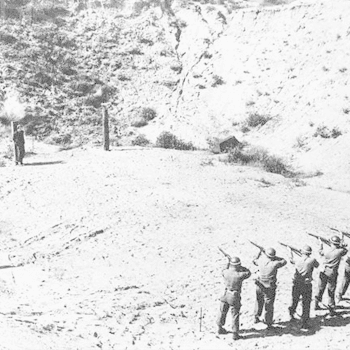Blog

200 year old children
June 10, 2014
“There are people alive today who will live to celebrate their 200th Birthday” some may say this claim is outlandish, but i think many in the medical research field would agree with the sentiment, but still may be little sceptical about the number 200years.
I do not believe that i will be among those to reach my 3rd century walking the planet, but i do think my children have every chance.
The decision they will have to make is that when a body part or organ falters, will they pay for a new
one to be tailor made and inserted. For example if they contract a condition like cancer of the liver, which would be a life ending for me in 2014, will in 2054, be the medical equivalent of replacing a blown tyre on you car.
Their new Liver will be exactly that, theirs, Bio-printed by a 3D organ printer using cultured stem cells taken from them. No rejection problem or other complications as the new liver will be identical to the one they had in thier early teen.
In 2054 a teenager born in 2000 will be the same as i am now having been born in 1959. I am a very different 54 year old than my parents were at the same age, when the biggest killer was a heart disease and people regularly died from simple stomach ulcers.
New organ replacement is only a small part of the story; we are very close to unlocking the secrets of ageing and we now know that is not inevitable. We have discovered and are studying examples in nature of immortal jelly fish and large mammals that live to 200 years or more such a some species of whale. We now understand how some Amphibians can regrow limbs and some can even lose half their brain and regenerate.
But this new generating future will not be for all, my children’s capacity to pay and the wealth of the society they live in will be major factors in their ability to access the medical technologies that will allow them to stay youthful for 2 centuries, perhaps more.
By: Norman Ohl
In 2054 a teenager born in 2000 will be the same as i am now having been born in 1959. I am a very different 54 year old than my parents were at the same age, when the biggest killer was a heart disease and people regularly died from simple stomach ulcers.
New organ replacement is only a small part of the story; we are very close to unlocking the secrets of ageing and we now know that is not inevitable. We have discovered and are studying examples in nature of immortal jelly fish and large mammals that live to 200 years or more such a some species of whale. We now understand how some Amphibians can regrow limbs and some can even lose half their brain and regenerate.
But this new generating future will not be for all, my children’s capacity to pay and the wealth of the society they live in will be major factors in their ability to access the medical technologies that will allow them to stay youthful for 2 centuries, perhaps more.
By: Norman Ohl

Matrix Medicine!
June 10, 2014
In the post-apocalyptic world that is so often portrayed by Hollywood, many things change.
Things we now take for granted and have no value today, are often perceived to have great value. As we move towards a world in which most common human pathogenic bacteria have evolved a defence against Antibiotics, due to misuse and over prescribing, these treatments will become ineffective and obsolete. It seems reasonable to me that Hollywood would postulate that substances that are rich in bacteria fighting, “Good Bugs” will become very valuable. One of the substances that if super rich in, disease fighting, good bacteria and is readily available is a health persons Poo! Is it possible that we will see this bodily product become valuable? After all we already have businesses dedicated to the purchase and collection of many other human products, like Blood, Sperm and Breast Milk.
A “Super Bug” is an Antibiotics resistant bacterium that causes disease and infection in humans. The number of Super Bugs is growing at an increasing rate. One of the most common is Clostridium difficile which is responsible for a staggering 14,000 deaths annually in the USA, and an estimated 1000 to 2000 in Australia. (clostridium difficile outbreaks are a reported event in USA but not in Australia) The most effective treatment available to Doctors is a Faecal transplant, this involves taking a sample of a Healthy Persons Poo and Diluting it in Saline solution or milk then using a nasal tube or colonscope to send the solution to the sick small ntestine.
Sounds positively medieval, but this is the best way to ensure patienr survival. By
introducing the healthy person’s microbial population into the patient, he Super Bug is out competed and destroyed by the Billions of bacteria in the healthy poo sample. So… how much would you to pay for a chunk of healthy poo if your life depended on it?
By: Norman Ohl

Sounds positively medieval, but this is the best way to ensure patienr survival. By
introducing the healthy person’s microbial population into the patient, he Super Bug is out competed and destroyed by the Billions of bacteria in the healthy poo sample. So… how much would you to pay for a chunk of healthy poo if your life depended on it?
By: Norman Ohl

Aussie Heart Therapy Breakthrough
June 9, 2014
On average a little over 800 babies are born every day in Australia, of these 6 will have some kind of Congenital Heart Disease (CHO). Current surgery techniques mean most will survive only to require more surgery later in life, that is, until a new Australian technology current being trialed is widely adopted. Cardiocel is an implantable tissue technology derived from Cows that ensure a permanent repair.
The patch has been successfully implanted in 25 patients at the time of writing in 2014, and is likely to bring benefit to not only babies, but also to the 32,000 Australians under 18 years of age who are currently living with a CHO. The biggest single advantage of the patch is that it does not generate a post surgery immune response or allergic reaction in the recipient. Another is that the patch is adopted by the Patients heart as an undifferentiated segment of tissue that becomes a part of their heart. How is this possible?
The patch starts its life as a bi product of our meat processing industry in the form of the protective sack that surrounds the heart of a cow, known as the pericardium. The cells and all cows DNA is removed from this, in what is essentially a series of washes through various solutions. At the end of this process what remains is a collagen matrix that very closely resembles that of normal human tissue.
Once placed inside a patient the patch served as a sort of scaffold that the person’s body now populates with tissue cells and blood vessels to integrate the patch into the surrounding healthy tissue . Unlike artificial patches that are now in use, there is no scaring or calcination, a very important advantage in a perpetual flexing human heart.
By Norman Ohl
Once placed inside a patient the patch served as a sort of scaffold that the person’s body now populates with tissue cells and blood vessels to integrate the patch into the surrounding healthy tissue . Unlike artificial patches that are now in use, there is no scaring or calcination, a very important advantage in a perpetual flexing human heart.
By Norman Ohl
1. Damaged heart valve

2. Patch is sewn on during open heart surgery

3. Blood vessels infiltrate the patch and deposit the same cells as surrounding tissue integrating it into the heart.


Autodidact
May 6, 2014
A friend of mine who also happens to be a Chemistry Professor once described me as an Autodidact. I had a look it up, and it means a self-taught person. While pondering upon this description, which i accept as being 70% accurate, I did my usual analysis of Positive, Negative and Interesting aspect of my non-existent educational credentials.
On the Positive side I realized that i do not use words that need to “looked up” by the listener if an alternate simpler and accurate description can be used. I also don’t suffer from academic discipline myopia, that is to say, as I have no specialty area of intense learning and as such have never been a prisoner of the silo effect that leaves me ignorant to other views or subjects.
Negative aspect would be that I would probably find it very difficult to gain employment in large organizations or developing economy’s where credentials are the first benchmark by which job candidates are cut or short listed. I know, I would probably not employ me. In the past I would not have a acces to the higher learning i crave, as Universities were the domain of the already academic accredited. The internet has gone a long way to ending this franchise.
Interesting outcomes of my Certificate fee office walls are continuous and seemingly never ending. One recent axample that springs to mind is the disbelief expressed by my audience of medical Doctors when one asked about my qualifications. I had just delivered a 60 minute presentation and Q & A session to 250 Medical Professionals, when one asked the question. My answer seemed unpalatable and I was accused of being cagey or outright lying, it was not logical to them that learning to the standard i had just displayed could be gained without attending a prestigious University.
By: Norman Ohl

Interesting outcomes of my Certificate fee office walls are continuous and seemingly never ending. One recent axample that springs to mind is the disbelief expressed by my audience of medical Doctors when one asked about my qualifications. I had just delivered a 60 minute presentation and Q & A session to 250 Medical Professionals, when one asked the question. My answer seemed unpalatable and I was accused of being cagey or outright lying, it was not logical to them that learning to the standard i had just displayed could be gained without attending a prestigious University.
By: Norman Ohl

The Firing Squad
April 9, 2014
You are standing in front of a firing squad chained to a pole. The scheduled time for your execution is 20 seconds away. You look down to see a beautiful white rose on the end of a branch from the climbing bush on the wall behind you. It could be within reach if you bend forward a little.
Do you ignore the prepared firing squad and bend forward to smell the sweet scent of nature’s creation? Or are you too petrified with fear, wondering where the barrage of bullets will strike your body?
While this situation is an extreme, during my life I have personally stood wondering on occasions of impending, but inevitable, disaster rather than look for some joy that may be within my grasp.
Surely a clear thinking person would realise that not to take the opportunity to smell the rose, is insane.
Remember I am talking about situations where you have passed the point of no return, not situations where concentrated focus or action may result in a better outcome.
Situations like one where your fate is in the hands of a third party. Such as a sentence handed out by a judge, or a lover or spouse who has not only filed for divorce, but has left the country to get away from you or a trusted business partner who has not only spent all the businesses money on the ponies but has also been bankrupted by the tax man.
At these times, the outcome is decided, the damage is done – you’re knackered!
Worrying about how you got there, at that moment, is as pointless as worrying about the bullets or the aim of the firing squad.
By Norman Ohl
Situations like one where your fate is in the hands of a third party. Such as a sentence handed out by a judge, or a lover or spouse who has not only filed for divorce, but has left the country to get away from you or a trusted business partner who has not only spent all the businesses money on the ponies but has also been bankrupted by the tax man.
At these times, the outcome is decided, the damage is done – you’re knackered!
Worrying about how you got there, at that moment, is as pointless as worrying about the bullets or the aim of the firing squad.
By Norman Ohl

Surely we know all there is?
April 8, 2014
"Surely we know all there is?
"
This comment, slash question came from a friend of mine at a recent dinner party. It was part of a discussion about advances currently being made in science.
The look of surprise on my face was so obvious that before I could express my strong disagreement another diner chimed in with a “yes, we must be close to knowing it all”.
My shock was compounded more because these two friends were educated people and their resolve seemed so strong. After 30 minutes of lively discussion during which I tried to draw their attention to fields of discovery like, origins of the universe, stem cell research, regenerative medicine and computer science to name a few, I could see I was getting no closer to altering their perspective. So to save the dinner party, we agreed to change the subject.
As I was heading home that night I reflect on what had been said, and wondered if perhaps the sheer volume of information available today through the magic of the internet and range of devices we carry which keep us constantly plugged in, was too much.
History has shown that new ideas which shake the foundations of the belief structure of the ignorant masses are challenged and even vilified. How ironic it would be if the overwhelming torrent of ideas and multimedia content we are exposed to today lead to overload switches being thrown in the minds of the masses. Resulting in the wide acceptance of popular culture of Kardasian culture at the expense of sound science and discover which may result in some inconvenient truths.
By: Norman Ohl

History has shown that new ideas which shake the foundations of the belief structure of the ignorant masses are challenged and even vilified. How ironic it would be if the overwhelming torrent of ideas and multimedia content we are exposed to today lead to overload switches being thrown in the minds of the masses. Resulting in the wide acceptance of popular culture of Kardasian culture at the expense of sound science and discover which may result in some inconvenient truths.
By: Norman Ohl

Stop interrupting me!
April 5, 2014
I cannot stand being interrupted when I’m working. I’ve written before about about the benefits of working from home and one of the main ones is the fact no-one can bail me up for a chat when I need to concentrate.
Now, I’m not saying social interaction at work is a total no no. Some of the best friends I’ve ever made I made at work. And we all need a bit of down time during the working day and office banter is a great way to do that. But there’s a time and a place for it. And that time is not when you’re on deadline for something important and one of your colleagues is up for a deep and meaningful.
Want to get some work done without email interuptus? Turn off Outlook. Too many phone calls? Stop answering them. Although that’s not that hard to do even if you’re in an office, what office-bound folk can never do is stop people coming to their door/cubicle and rabbiting on for hours.
Unless, of course, you’re Norman Ohl. He now runs a business called Jubilant Health, but in a previous incarnation as a boss he had a genius way of stopping people disturbing his work.
He bought an old-style parking meter when the council was selling them off and installed it in his office. When someone came to his door they had to put money in the meter – max 30 minutes – and pay for the privilege of talking to him.
“It worked a treat and was a bit of fun, which softened the blow when people realised I was serious and enforced the expired flag when it popped up,” Ohl says.
Love it. No one’s going to waste 30 minutes of time on the meter talking about Nan’s 80th. But they might be willing to flash some cash for something really important for the business.
Frederic Chanut, managing director of In Marketing We Trust, has another idea.
“I’ve never tried it, but once heard about it. Connect a car battery to the apparent metallic structure of your cubicle. Make sure your points of contact are fully insulated. Anyone putting their hand on the metallic border of your cubicle or table gets zapped. Can be a problem – or a solution – if your boss comes frequently to your desk.”
OK, these ideas are somewhat unorthodox and probably unable to be implemented in most workplaces. So luckily there are more ways to manage people interrupting you at work.
Happily, Chanut’s other ideas are a bit more moderate than the one above.
“I have rituals like a light above my desk or the number of coffee cups on my desk as a sign of social hibernation. So the idea is to let people know you are busy. Have a sign on your desk: “do not disturb”. And tell repeat offenders you’ll meet them at lunch for a chat instead,” Chanut advises.
“Or a big, fat Skype headset generally sends a clear message that I am not available. Add the hoody for casual Fridays and people tend to be scared. For reference, I’m a six-foot-two ex-rugby player so it definitely adds to the style.”
Workplace relations specialist Heidi Alexandra Pollard, who runs UQ Power, has a formula called 45:15 for managing non-work during work time.
She says the rule applies to 60-minute intervals. You start work at the beginning of the hour, break after 45 minutes and repeat the cycle at the start of the next hour.
Pollard says it’s an excellent idea for teams. “As a team you agree to work in a solid, focused manner for 45 minutes – that means no checking emails, no checking social media, no texting, no taking phone calls and definitely no interrupting each other. Start on the top of the hour as it’s easier to track,” she explains.
“If you think of something you need to discuss or ask another team member during the first 45 minutes of the hour you simply write it down on a notepad and then continue working in the same focused way.”
At the 45-minute mark you stop and get up from your desk to stretch your legs, ask the question you needed to ask other team members, visit the bathroom or make your coffee and check your email and return calls.
“By creating a space each and every hour for interaction and interruption you get the chance to engage, maintain contact with your peers and stimulate discussion.” Pollard says.
So there you go, next time the office have-a-chat wants a lengthy chinwag, no need to sit there and smile. Employ the nuclear option and electrify your desk. Or maybe just use Pollard’s 45:15 strategy – and suggest it to your boss.
By Norman Ohl
He bought an old-style parking meter when the council was selling them off and installed it in his office. When someone came to his door they had to put money in the meter – max 30 minutes – and pay for the privilege of talking to him.
“It worked a treat and was a bit of fun, which softened the blow when people realised I was serious and enforced the expired flag when it popped up,” Ohl says.
Love it. No one’s going to waste 30 minutes of time on the meter talking about Nan’s 80th. But they might be willing to flash some cash for something really important for the business.
Frederic Chanut, managing director of In Marketing We Trust, has another idea.
“I’ve never tried it, but once heard about it. Connect a car battery to the apparent metallic structure of your cubicle. Make sure your points of contact are fully insulated. Anyone putting their hand on the metallic border of your cubicle or table gets zapped. Can be a problem – or a solution – if your boss comes frequently to your desk.”
OK, these ideas are somewhat unorthodox and probably unable to be implemented in most workplaces. So luckily there are more ways to manage people interrupting you at work.
Happily, Chanut’s other ideas are a bit more moderate than the one above.
“I have rituals like a light above my desk or the number of coffee cups on my desk as a sign of social hibernation. So the idea is to let people know you are busy. Have a sign on your desk: “do not disturb”. And tell repeat offenders you’ll meet them at lunch for a chat instead,” Chanut advises.
“Or a big, fat Skype headset generally sends a clear message that I am not available. Add the hoody for casual Fridays and people tend to be scared. For reference, I’m a six-foot-two ex-rugby player so it definitely adds to the style.”
Workplace relations specialist Heidi Alexandra Pollard, who runs UQ Power, has a formula called 45:15 for managing non-work during work time.
She says the rule applies to 60-minute intervals. You start work at the beginning of the hour, break after 45 minutes and repeat the cycle at the start of the next hour.
Pollard says it’s an excellent idea for teams. “As a team you agree to work in a solid, focused manner for 45 minutes – that means no checking emails, no checking social media, no texting, no taking phone calls and definitely no interrupting each other. Start on the top of the hour as it’s easier to track,” she explains.
“If you think of something you need to discuss or ask another team member during the first 45 minutes of the hour you simply write it down on a notepad and then continue working in the same focused way.”
At the 45-minute mark you stop and get up from your desk to stretch your legs, ask the question you needed to ask other team members, visit the bathroom or make your coffee and check your email and return calls.
“By creating a space each and every hour for interaction and interruption you get the chance to engage, maintain contact with your peers and stimulate discussion.” Pollard says.
So there you go, next time the office have-a-chat wants a lengthy chinwag, no need to sit there and smile. Employ the nuclear option and electrify your desk. Or maybe just use Pollard’s 45:15 strategy – and suggest it to your boss.
By Norman Ohl

What your boss really wants to say to you
April 4, 2014
Norman Ohl, an employer for more than 30 years, refers to his staff as “the paid enemy” – not to their faces of course.
“If there was a common overriding issue with my employees, regardless of the industry I was in at the time, it’s that they leave their brain and care factor at the door when they arrive at work,” he says.
”“ Just because you know someone and think they’re a good woman or a good guy doesn’t mean they’re competent in their job.
“This means you often pay them to stuff up; then you have to pay to fix the stuff-up.
“In a construction company I owned, my eight employees managed to destroy $16,000 worth of equipment in a single week due to five careless acts of negligence and zero care factor!”
Mr Ohl says a good employee who shows initiative is a real find, but unfortunately a rare one.
There’s plenty of things he’d like to say to his staff, but as for all small business owners, there’s a fine line between telling it like it is and falling foul of the law.
Kate Mackie, who has owned a business in the beauty industry for nine months, says finding reliable casual staff is her biggest challenge.
She takes a straight-up approach with staff. “I told them from the beginning – I’ll give you honesty as long as you’re honest with me.”
But occasionally, such as when a beauty therapist called to say she was unavailable with only an hour’s notice – four times in a week – Mackie has to moderate her reaction.
“It’s very hard. You can’t discriminate, you can’t assume or you can’t accuse,” she says.
Mackie has also been taken aback by some of her junior employees’ attitudes.
“The younger generation seem to want the boss’s job and pay but they don’t want to work for it,” she says.
“I sometimes find the younger generation a little bit cheekier about what they say to you. The line of respect isn’t there.”
Tara Martin, who runs the recently launched sports nutrition website Runner’s Kitchen, has taken on half a dozen contractors in the early stages of her business, and has been less than impressed with some of her experiences.
Most of her bugbears revolve around employees gilding the lily – promising one thing in their job interview and then failing to deliver.
Many haven’t lasted all that long.
“Partly that’s because you need people to help you with various phases of setting up the business and they’re not required any more. Other people you find they really don’t understand your business at all,” Ms Martin says.
Here’s what she would have liked to say to some of her staff in a previous role: “You are so focused on what you think is good for your career that you have missed the point that your career is only as successful as the business you are in.”
She goes on: “If you could put your ego aside and help the team (as you’ve been asked to) rather than working on your own career, we’d all be a lot more successful. Smarten up!”
If she didn’t have to mince words, Ms Martin would have also liked to tell another employee that he was “lazy and misguided about his own capability”.
In his interview, she said the applicant claimed to know plenty, and was willing to undertake additional training, “but it was all lies”.
“Within about six to eight months he left of his own accord which was fortunate. He thought he was a shining star.”
Ms Martin has learnt to take on staff for trial periods, to conduct more due diligence and take referrals from friends and family with a grain of salt.
“The unfortunate thing about trust [if a staff member has been recommended] is that it’s very disarming,” she says.
“Just because you know someone and think they’re a good woman or a good guy doesn’t mean they’re competent in their job.”
Sometimes, the actions of staff can just leave you shaking your head in wonder, says one Melbourne bookstore owner.
“I had an exchange with a staff member once where I was ticking him off for leaving the A-frame out overnight – they’re worth a couple of hundred dollars and are routinely kicked to pieces if not brought inside,” he says.
“Anyway, when confronted with this his defence was ‘Yes, I did leave it out, but at least I wasn’t drunk!’.
“I think he’s an engineer now, which is worrying on a whole different level.”
What would you like to say to your staff if there were no ramifications?
By: Norman Ohl

There’s plenty of things he’d like to say to his staff, but as for all small business owners, there’s a fine line between telling it like it is and falling foul of the law.
Kate Mackie, who has owned a business in the beauty industry for nine months, says finding reliable casual staff is her biggest challenge.
She takes a straight-up approach with staff. “I told them from the beginning – I’ll give you honesty as long as you’re honest with me.”
But occasionally, such as when a beauty therapist called to say she was unavailable with only an hour’s notice – four times in a week – Mackie has to moderate her reaction.
“It’s very hard. You can’t discriminate, you can’t assume or you can’t accuse,” she says.
Mackie has also been taken aback by some of her junior employees’ attitudes.
“The younger generation seem to want the boss’s job and pay but they don’t want to work for it,” she says.
“I sometimes find the younger generation a little bit cheekier about what they say to you. The line of respect isn’t there.”
Tara Martin, who runs the recently launched sports nutrition website Runner’s Kitchen, has taken on half a dozen contractors in the early stages of her business, and has been less than impressed with some of her experiences.
Most of her bugbears revolve around employees gilding the lily – promising one thing in their job interview and then failing to deliver.
Many haven’t lasted all that long.
“Partly that’s because you need people to help you with various phases of setting up the business and they’re not required any more. Other people you find they really don’t understand your business at all,” Ms Martin says.
Here’s what she would have liked to say to some of her staff in a previous role: “You are so focused on what you think is good for your career that you have missed the point that your career is only as successful as the business you are in.”
She goes on: “If you could put your ego aside and help the team (as you’ve been asked to) rather than working on your own career, we’d all be a lot more successful. Smarten up!”
If she didn’t have to mince words, Ms Martin would have also liked to tell another employee that he was “lazy and misguided about his own capability”.
In his interview, she said the applicant claimed to know plenty, and was willing to undertake additional training, “but it was all lies”.
“Within about six to eight months he left of his own accord which was fortunate. He thought he was a shining star.”
Ms Martin has learnt to take on staff for trial periods, to conduct more due diligence and take referrals from friends and family with a grain of salt.
“The unfortunate thing about trust [if a staff member has been recommended] is that it’s very disarming,” she says.
“Just because you know someone and think they’re a good woman or a good guy doesn’t mean they’re competent in their job.”
Sometimes, the actions of staff can just leave you shaking your head in wonder, says one Melbourne bookstore owner.
“I had an exchange with a staff member once where I was ticking him off for leaving the A-frame out overnight – they’re worth a couple of hundred dollars and are routinely kicked to pieces if not brought inside,” he says.
“Anyway, when confronted with this his defence was ‘Yes, I did leave it out, but at least I wasn’t drunk!’.
“I think he’s an engineer now, which is worrying on a whole different level.”
What would you like to say to your staff if there were no ramifications?
By: Norman Ohl

Trying to Lose Fat? Know the Basic Facts
April 4, 2014
Fats or lipids are energy reserves in our body. While carbohydrates are used as the immediate source of energy, our body cannot store much of these, the little it does, is stored in the form of glycogen. Thus energy is stored in fat cells called adipose tissue for future use. In certain people an excess of fat is stored in the cells which results in excess body mass or in severe cases obesity. This excess body fat can create various health problems in humans.
How Fat Cells are Formed?
When we eat a meal the concentration of the fatty acids increase in blood as a result of our intake of food, the lipase enzyme in fat cells convert them into triglycerides.
The fat cells or adipose tissue store fats as triglycerides. These are balloon like, meaning that they may shrink or expand depending on the amount of triglycerides but do not disappear when people lose weight. The majority of the fat cells are found beneath the skin as subcutaneous fat stored in the areas around the waist, buttock, chest, abdomen, breasts and hips and from a health perspective is not that bad. The fat around organs like kidneys, liver and inside muscles is called visceral fat, is much worse in terms of health consequences.
How Fat Cells Release Energy?
When stored fat is used for energy, the enzymes again break down the contents of the fat cells into glycerol and fatty acid and released into the blood. When the fatty acids reach muscle cells they enter the mitochondria or the powerhouse of the cell where the fatty acids are converted into the energy in the form of adenosine triphosphate (ATP) or liquid raw energy. Muscle being an active tissue requires a lot of energy for doing various tasks.
What Methods are There to Reduce Fat?
There are many methods to lose excess fat from our body. Certain drugs can be used and there are also surgical procedures to shed excess fat. The natural way to lose fat is to burn it when we move our bodies, this is also called oxidation. Body exercises can reduce fat to a great extent. It is clinically revealed that some fat burner supplements can effectively reduce fat from our body.
How Effective are Fat Burner Supplements?
A large number of fat burner supplements and foods are now available all over the world, but all of them do not work in reality, and rely on clever marketing to gain sales. Some of them only help in weight loss but do not shed body fat. Others may contain compounds like Ephedrine or other stimulant and artificial agents which are not good for the body particularly the heart and liver. Generally all fat burners increase the metabolic hormones to help in fat burning. They may contain appetite suppressing agents and carbohydrate or fat blocking ingredients. Certain fat burners can produce side effects like insomnia or abnormal sleeping, headache, nervousness. Such fat burners are sometimes habit forming if taken for a long time.
Norman Ohl is the founder of Jubilent Health [http://www.jubilenthealth.com.au/About-Us.html], a nutraceutical medicine manufacturer based in Australia. ToneUP [http://www.toneup.com.au/], an effervescent drink marketed by Jubilent Health is clinically proven and widely accepted as a fat reducing agent and muscle builder without any side effects.
Article Source: http://EzineArticles.com/6161930
By Norman Ohl
How Fat Cells Release Energy?
When stored fat is used for energy, the enzymes again break down the contents of the fat cells into glycerol and fatty acid and released into the blood. When the fatty acids reach muscle cells they enter the mitochondria or the powerhouse of the cell where the fatty acids are converted into the energy in the form of adenosine triphosphate (ATP) or liquid raw energy. Muscle being an active tissue requires a lot of energy for doing various tasks.
What Methods are There to Reduce Fat?
There are many methods to lose excess fat from our body. Certain drugs can be used and there are also surgical procedures to shed excess fat. The natural way to lose fat is to burn it when we move our bodies, this is also called oxidation. Body exercises can reduce fat to a great extent. It is clinically revealed that some fat burner supplements can effectively reduce fat from our body.
How Effective are Fat Burner Supplements?
A large number of fat burner supplements and foods are now available all over the world, but all of them do not work in reality, and rely on clever marketing to gain sales. Some of them only help in weight loss but do not shed body fat. Others may contain compounds like Ephedrine or other stimulant and artificial agents which are not good for the body particularly the heart and liver. Generally all fat burners increase the metabolic hormones to help in fat burning. They may contain appetite suppressing agents and carbohydrate or fat blocking ingredients. Certain fat burners can produce side effects like insomnia or abnormal sleeping, headache, nervousness. Such fat burners are sometimes habit forming if taken for a long time.
Norman Ohl is the founder of Jubilent Health [http://www.jubilenthealth.com.au/About-Us.html], a nutraceutical medicine manufacturer based in Australia. ToneUP [http://www.toneup.com.au/], an effervescent drink marketed by Jubilent Health is clinically proven and widely accepted as a fat reducing agent and muscle builder without any side effects.
Article Source: http://EzineArticles.com/6161930
By Norman Ohl
